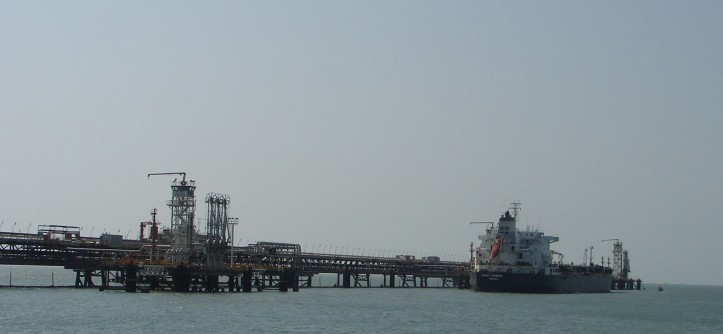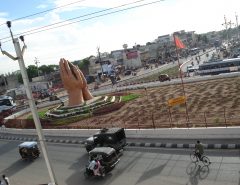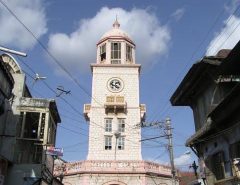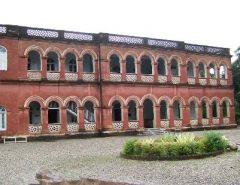Mandvi is a city and a municipality in the Kutch district in the Indian state of Gujarat. It was once a major port of the region and summer retreat for Maharao (king) of the Cutch State. The old city was enclosed in the fort wall and remains of the fort wall can still be seen. The city has a four-hundred-year-old ship building industry, which was started by the caste of Kharva that still builds small wooden ships.
Fortress
The fortress of Mandvi was built by Raoshri Bharmalji in 1549.[dubious – discuss] It was eight km long, 2.7 metre broad and three metre high with five gates, three windows and seven bastions (kotha). In 1978, Mandvi municipality was handed over the fort under condition that it will preserve the fortress. Later in 1992, the municipality decided to demolish 290 metre of wall to free the land but was opposed by citizens. The appeal was rejected in 1993 and the 300 metre long wall of west side was demolished in 1993. In 1999, the state archeological department considered it for declaring protected monument but later decided against it. After assessing condition of fort, the court rejected appeals against demolition in 2001. The fort wall was demolished in two phases except four gates and six bastions which were preserved as protected monuments.
Geography
Mandvi is a port city located at 22.81°N 69.36°E where the Rukmavati River meets the Gulf of Kutch. It is about 56 km south of the regional capital, Bhuj. It is approximately 446 km from the major Gujarati megacity of Ahmedabad. Because Mandvi has no rail transport, the nearest public airport and train station is Bhuj.
History
Mandvi was founded by the Rao of kutch State, Khengarji I in 1580.
Ruins of fort wall and gate near Brahmapuri area. The city Mandvi was named after Sage Mandavya (Mahabharata story), who lived here. He was also known as AM BABA.
As per chronicles of Kutch Gurjar Kshatriyas – many clans of their community, especially, Gohil, Bhatti, Jethwa, Solanki, Rathod clans & also Visavaria Brahmins shifted to Mandvi in between 15th to 16th Century AD, from Dhaneti.
The establishment of the town dates back to the late 16th century (1581 AD) and is attributed to the first Jadeja ruler of Kutch, Rao Khengarji I.
In the 18th century, the Mandvi merchants collectively owned a fleet of 400 vessels trading with East Africa, Malabar coast and the Persian Gulf. In the early 19th century, it was a major port of entry for the inland trade with Malwa, Marwar and Sindh.
Mandvi was at the junction of two famous trade routes the maritime spice trade-route and the desert camel caravan route, acting as an important trade center.
Mandvi was originally a fortified town having a fort wall of about 8 m high and 1.2 m wide stone masonry. The fort had several gateways and 25 bastions; but at present, most of the wall has disappeared. The bastion on the southwest is largest and acts as a lighthouse.
In the heyday of maritime trade, before the arrival of steamboats, Mandvi was a rich and prosperous town, earning four times more revenue from export than import. It was a profit-making center of the Kutch state, surpassing the capital city of Bhuj in terms of wealth. Dr.Manubhai Pandhi, a local social leader, recorded shipbuilding art and collected old documents which is treasured now in Prince of Wales Museum (www.bombaymuseum.org ) in Mumbai.
As most of the top ports of India were controlled by Europeans, especially the Portuguese, even the Mughals held the Maharaos of Kachchh in high esteem, as they needed the port of Mandvi for exports, imports and also for pilgrimages to Mecca.
In decade of 1960, the famous Dabeli is said to have been invented here by Keshavji Gabha Chudasama (Malam).
- Country – India
- State – Gujarat
- District – Kutch
- PIN – 370465
- Total – 42,355
- Elevation – 15 miter (49 ft)




